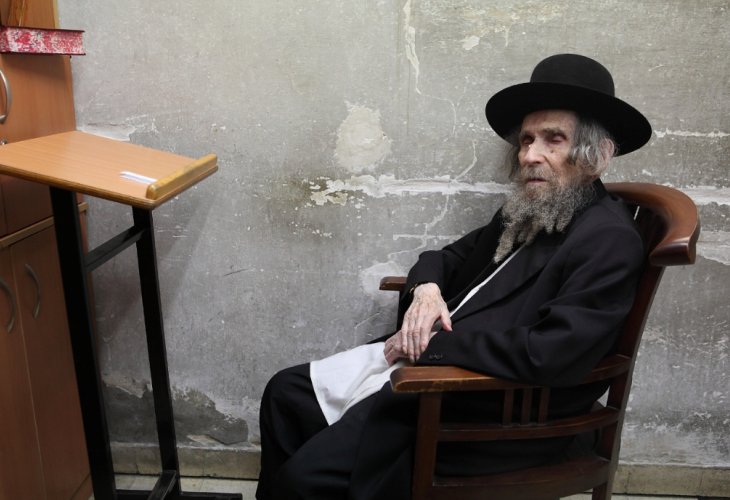Personal Stories
A Year to Live: Rabbi Steinman's Unexpected Answer
As the end drew near, one rabbi turned to another for guidance and received an answer full of meaning and heart.
 Rabbi Steinman (Photo: Flash 90)
Rabbi Steinman (Photo: Flash 90)In his weekly column in the Yated Ne'eman newspaper, Rabbi Shmuel Baruch Ganot shared a heartfelt story about his teacher, the late Rabbi Diskin, one of the senior rabbis of the Kol Torah yeshiva (advanced Torah school for young men) in Jerusalem.
This conversation took place a year before Rabbi Diskin passed away. He was already very ill, and the doctors had told him clearly that, naturally speaking, he didn’t have much time left.
“I’ve been struggling with a very hard question,” he told Rabbi Ganot. “I have a manuscript ready on Masechet Zevachim (a tractate from the Talmud dealing with Temple offerings), and I would like to organize it and prepare it for printing as the second volume of my book, Masat Moshe. On the other hand, the students at the Kol Torah yeshiva are used to me being there every day. They look forward to our learning together. So I wonder: Should I stay home and work on preparing my book for publication, or should I continue to go to the yeshiva daily, sit with the boys, and learn with them as I always have?”
It was truly a difficult choice, how do you spend your final days when both paths are for the sake of Torah? To find clarity, Rabbi Diskin did what he always did when faced with a serious question: he turned to the gadol hador, the great Torah leader of the generation, Rabbi Aharon Yehuda Leib Steinman.
There are Torah scholars who devote themselves fully to writing, publishing powerful Torah books but they don’t teach in yeshiva. And there are those who teach Torah daily to students, but haven’t published their insights. Rabbi Steinman had done both. He was a leading rosh yeshiva (head of a yeshiva), a respected author of Torah works, and a man who understood deeply the value of each form of Torah insights.
When Rabbi Diskin arrived at Rabbi Steinman’s humble home and presented his dilemma, Rabbi Steinman paused to reflect, and then gave his answer: Kol Torah is preferable.
The quiet presence of Rabbi Diskin in the yeshiva hall, and the depth and richness of the Torah discussions that took place there with his help, were more valuable even in his final year than another extraordinary volume of Masat Moshe. As great as the merit of publishing Torah is, the impact of learning face-to-face with students was even greater.
Rabbi Ganot concludes movingly: “The Torah world lost Masat Melech on Zevachim but the students of Kol Torah yeshiva gained another full year of elevated learning, uplifted by the presence of their beloved teacher and rabbi.”

